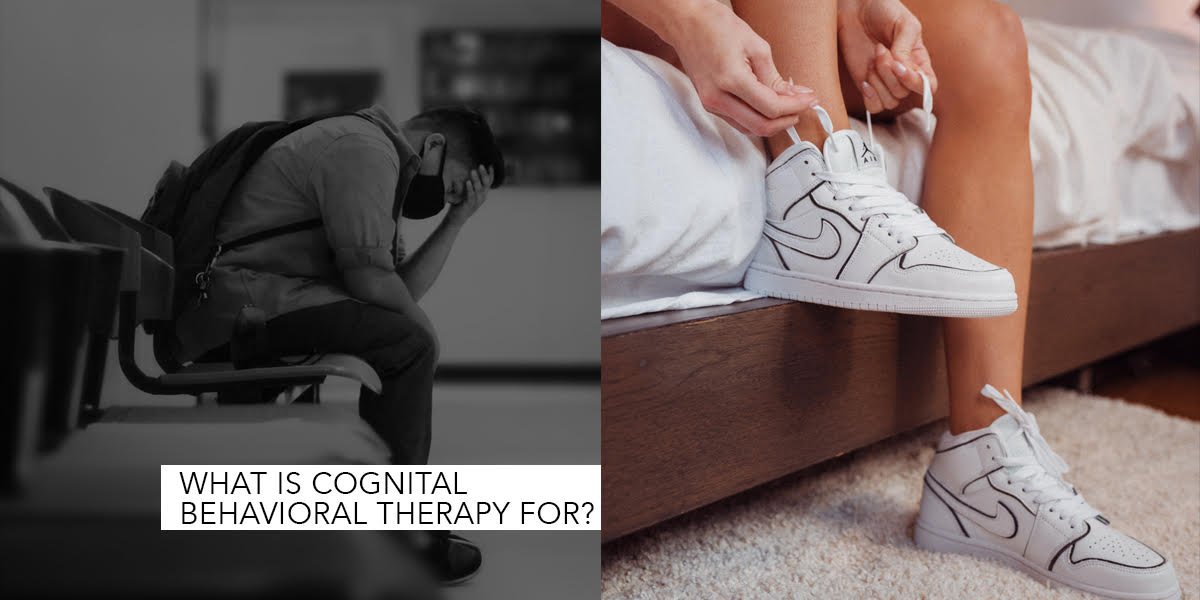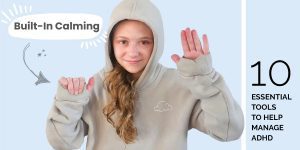
Cognitive behavioral therapy, shortened to CBT, is a form of psychotherapy that can teach you how to cope with anxiety and other big feelings. A health care provider who is trained in CBT can teach you how to apply CBT techniques to everyday life.
How Does CBT Work
You can start learning CBT techniques at your own pace using books or following online guides, but working with a specialist can help you achieve results faster. Together you can:

- Identify a specific problem in your life that is causing you to feel anxious
- Bring awareness to unproductive thought patterns that may be stopping you from taking action
- Identify negative thought patterns and reshaping them
- Learning and applying new productive behaviors
An expert can help you identify clear behaviors or triggers that worsen how you feel. Once you know this information you can start to make meaningful changes that will help you feel better. It can take time to relearn thought patterns, so be patient and extra gracious to yourself as you work on healing.
Uses for CBT

CBT is used to address a number of mental health disorders. These include:
- Anxiety
- Depression
- Eating disorders
- Alcohol and drug problems
- Marital problems
During counseling, you will learn CBT techniques that help you redirect negative thoughts into positive ones.
How to Start Using CBT
There are several different approaches to CBT and the best course of action will depend on your needs. You may have to try a few different styles until you find the best fit.

Journaling and thought records. Tracking how you feel can help bring awareness to your behaviors, thoughts, and feelings. When this data is in front of you, you can better see and accept patterns which could benefit from CBT techniques. You can also document good moments and memories. This information can help you stay motivated and remind you of positive events.

Relaxation and stress reduction. It can be hard to feel less anxious when you have a busy mind. Slowing down and taking time to practice relaxation techniques can be a game changer. Taking five minutes every morning, or at lunch, to practice deep belly breathing can help your nervous system slow down. Stress will always be part of your life, and the best thing you can do is learn how to manage your reaction to stressful situations.

Successive approximation. Taking action can feel overwhelming, especially on days when you already feel stressed or more anxious. Breaking up tasks into successive and smaller steps can help relieve some of the stress. An example could be a person who wants to go to the gym, but can’t seem to make it out the door. Successive steps for this person might look like:
- I am going to put on my gym clothes.
- I will go to the front door and put on my shoes.
- I am going to get into my car and drive to the gym.
- I will go inside and walk on the treadmill.
The Takeaway
CBT can help people manage their anxiety response to stimuli. Every person will have different triggers, but CBT techniques can be customized and applied to your situation. Sometimes CBT may not be the right option for you, and a therapist can recommend other forms of treatment which are also proven to help.
Examples include dialectical behavioral therapy (DBT) which can be more helpful for managing emotional responses. People who have binge eating disorder may benefit from this form of therapy. Another option is acceptance and commitment therapy (ACT) which can help a person accept thoughts and feelings instead of resisting them.

FAQs
- What does CBT stand for?
CBT stands for cognitive behavioral therapy. It can help reshape thinking patterns and lower feelings of anxiety.
- How often should I do CBT?
You should apply CBT techniques to problems you are trying to address. Applying CBT as often as possible can help solidify your learnings.
- What is cognitive restructuring?
Cognitive restructuring refers to changing thought patterns. Combined CBT approaches can help you achieve this.







